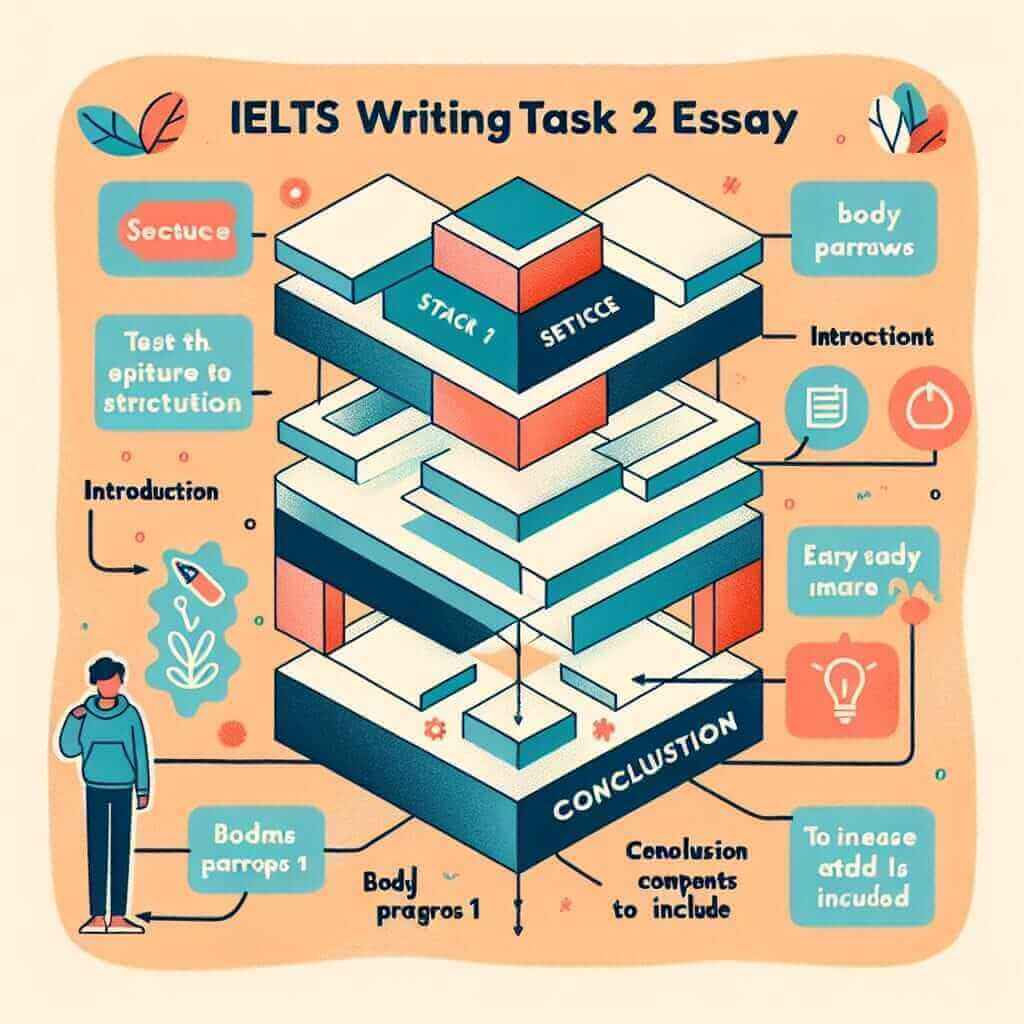Achieving a high score in the IELTS Writing Task 2 requires a strong command of English and the ability to structure your essay effectively. A key aspect of this is crafting well-developed body paragraphs that present your ideas in a clear, logical, and persuasive manner. This article delves into the essential elements of writing compelling body paragraphs for IELTS Writing Task 2, providing you with practical strategies and examples to elevate your writing skills.
Understanding the Role of Body Paragraphs
Body paragraphs form the core of your IELTS essay, each dedicated to developing a specific aspect of your argument or response to the prompt. They provide evidence, explanations, and examples to support your main ideas, ultimately convincing the examiner of your ability to articulate a well-reasoned and coherent argument.
Constructing Effective Body Paragraphs
A well-structured body paragraph typically follows a simple yet effective framework:
1. Topic Sentence: Begins the paragraph by clearly stating the main idea or argument that will be developed within that paragraph.
2. Supporting Sentences: These sentences elaborate on the topic sentence, providing evidence, examples, statistics, or personal anecdotes to support your claim.
3. Explanation: Analyze and explain the evidence provided, demonstrating its relevance to your overall argument.
4. Linking Sentence (Optional): Concludes the paragraph by smoothly transitioning to the next, connecting the ideas presented.
Techniques for Enhancing Body Paragraphs
1. Use Clear and Concise Language
Avoid using overly complex vocabulary or sentence structures. Instead, focus on conveying your ideas with clarity and precision using language that is easy to understand.
Example:
Overly Complex: “The proliferation of social media platforms has engendered a paradigm shift in interpersonal communication, ostensibly diminishing face-to-face interactions.”
Clear and Concise: “Social media has significantly changed how people communicate, potentially leading to a decline in face-to-face interactions.”
2. Provide Strong Evidence and Examples
Support your claims with relevant and specific examples. This could include:
- Real-world examples: Events from current affairs, history, or personal experiences
- Statistics or data: Research findings or numerical data that support your point
- Anecdotes: Brief stories that illustrate your point in a relatable way
Example:
Prompt: “Some people believe that the government should fund public transportation more than private car use. To what extent do you agree or disagree?”
Body Paragraph:
“Investing in public transportation not only reduces traffic congestion but also promotes environmental sustainability. For instance, cities like Copenhagen, which have heavily invested in cycling infrastructure and efficient public transport, experience significantly lower carbon emissions compared to car-dependent cities.”
3. Use Transition Words and Phrases
Transition words and phrases help guide the reader through your essay by connecting ideas and sentences within and between paragraphs. Examples include:
- Addition: Furthermore, Moreover, In addition
- Contrast: However, On the other hand, Conversely
- Example: For example, For instance, To illustrate
- Cause and effect: Therefore, Consequently, As a result
Example:
“Furthermore, public transportation systems can connect people living in rural areas to urban centers, providing them with better access to education, healthcare, and employment opportunities.”
4. Vary Sentence Structure
Using a variety of sentence structures can make your writing more engaging and demonstrate your grammatical range.
Example:
Simple: “Public transportation is cost-effective.”
Compound: “Public transportation is cost-effective, and it is environmentally friendly.”
Complex: “Because it is cost-effective and environmentally friendly, public transportation is a sustainable solution for urban mobility.”
5. Ensure Cohesion and Coherence
Each sentence within a body paragraph should logically connect to the previous and following sentences, ensuring a smooth flow of ideas. Use pronouns, synonyms, and linking words to achieve this.

Common Mistakes to Avoid
- Lack of a clear topic sentence: Each body paragraph should begin with a clear statement that outlines the main idea.
- Insufficient evidence: Support all claims with relevant and specific examples.
- Over-generalization: Avoid making sweeping statements without sufficient evidence.
- Plagiarism: Using ideas or language from other sources without proper citation is unacceptable.
- Ignoring word count: Ensure your body paragraphs are of appropriate length and contribute to a balanced essay.
Practice Makes Perfect
The key to mastering IELTS Writing Task 2 body paragraphs is consistent practice. Regularly write essays under timed conditions and seek feedback from experienced IELTS tutors or teachers. Analyzing high-scoring sample essays can also provide valuable insights into structuring effective body paragraphs.
Conclusion
By focusing on clear communication, providing strong evidence, and using effective transition words, you can significantly improve the quality of your body paragraphs and enhance your overall IELTS Writing Task 2 score. Remember, consistent practice and expert feedback are invaluable tools on your path to IELTS success.